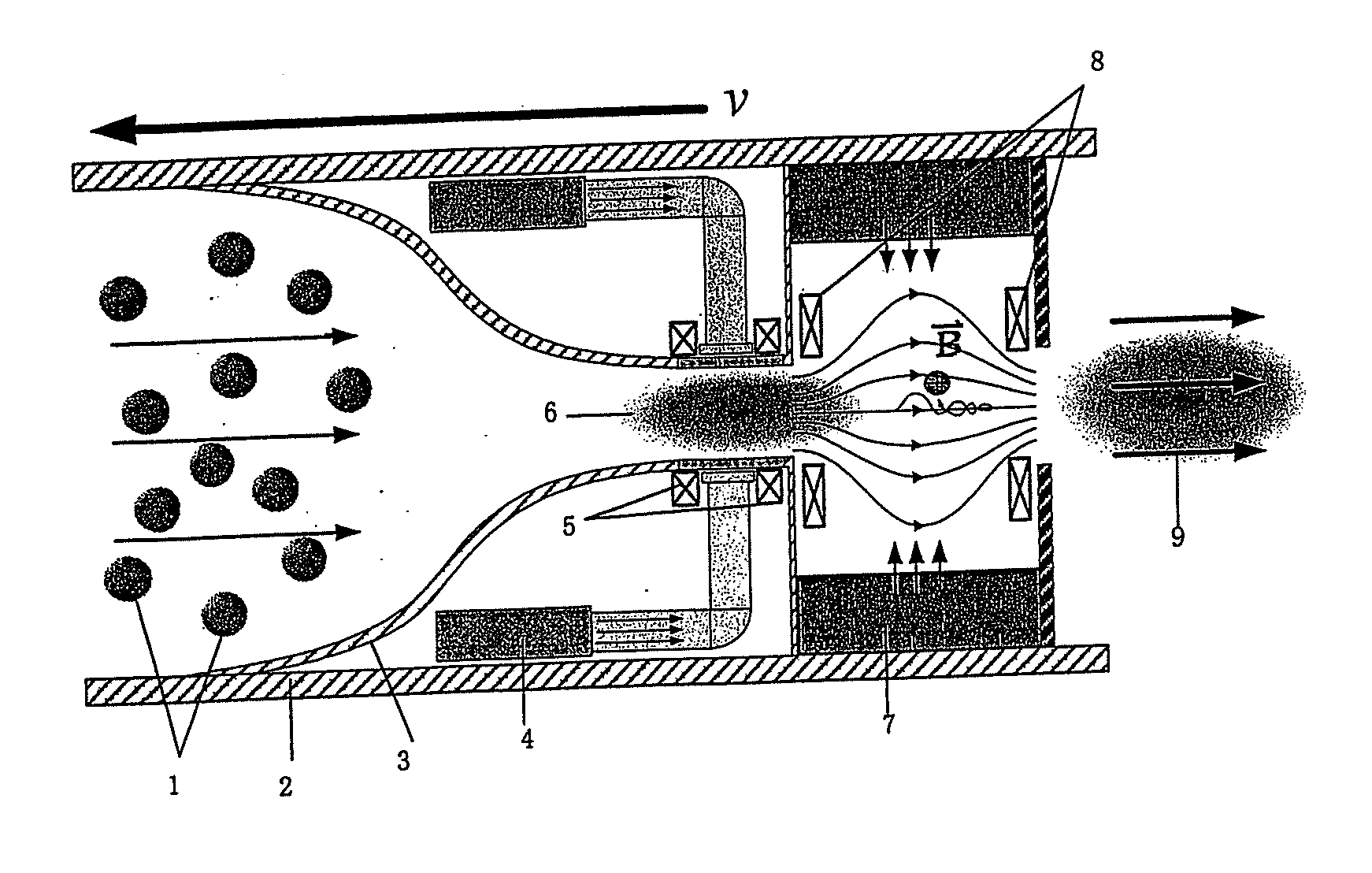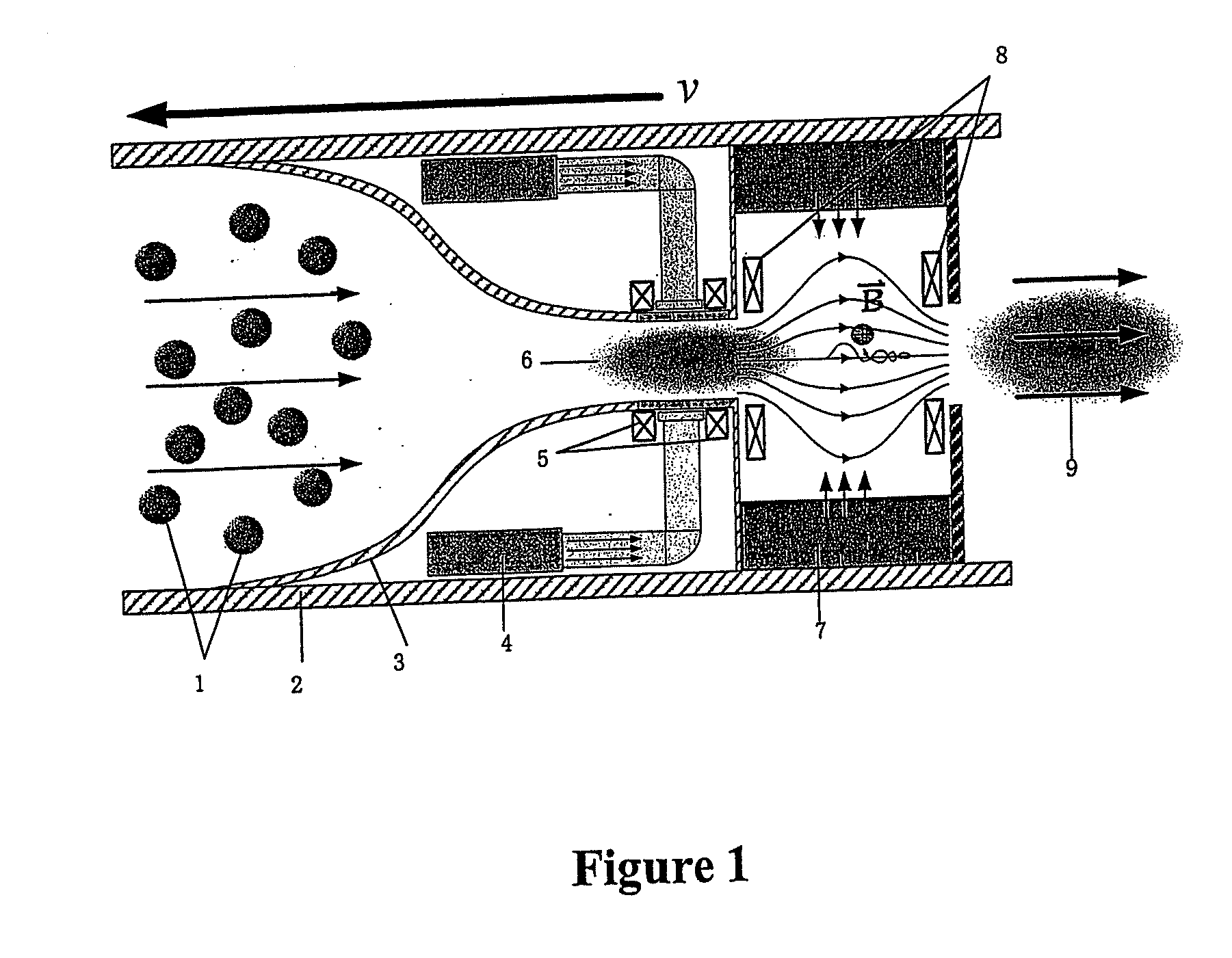Fuel-Free Spacecraft Propelling System Based on Spatial Atomic Oxygen and Propelling Method
a technology of atomic oxygen and propelling method, which is applied in the field of spacecraft propulsion, can solve the problems of restricting the orbit life of spacecraft, and achieve the effect of reducing launch costs
- Summary
- Abstract
- Description
- Claims
- Application Information
AI Technical Summary
Benefits of technology
Problems solved by technology
Method used
Image
Examples
Embodiment Construction
[0016]In FIG. 1, the following numbers indicate the respective components: 1—a space atomic oxygen; 2—an outer cylinder of the propulsion device; 3—an atomic oxygen collecting device; 4—an RF generating device; 5—a magnetic confinement device; 6—a spiral wave discharge oxygen plasma; 7—an ion cyclotron wave heating device; 8—a magnetic confinement device; 9—an ion spraying flame.
[0017]Embodiments of the fuel-free spacecraft propulsion system based on the space atomic oxygen of the invention now will be described more fully with reference to the accompanying drawings. These embodiments are provided for example, the invention should not be construed as limited to the embodiments.
[0018]In FIG. 1, a fuel-free spacecraft propulsion system based on the space atomic oxygen of the invention, comprises an outer cylinder 2 of the propulsion device with both ends open, an atomic oxygen collecting device 3 inside the outer cylinder 2 of the propulsion device, an RF generating device 4 and the i...
PUM
 Login to View More
Login to View More Abstract
Description
Claims
Application Information
 Login to View More
Login to View More - R&D
- Intellectual Property
- Life Sciences
- Materials
- Tech Scout
- Unparalleled Data Quality
- Higher Quality Content
- 60% Fewer Hallucinations
Browse by: Latest US Patents, China's latest patents, Technical Efficacy Thesaurus, Application Domain, Technology Topic, Popular Technical Reports.
© 2025 PatSnap. All rights reserved.Legal|Privacy policy|Modern Slavery Act Transparency Statement|Sitemap|About US| Contact US: help@patsnap.com



